Introduction
Qeshm Island, the largest island in Iran and the Persian Gulf, is home to numerous natural attractions, each showcasing the pristine beauty of this region. Among these attractions, Namakdan Cave stands out for its unique and astonishing features, making it one of the most popular destinations for tourists and geologists alike. This cave is not only remarkable for its length and depth but also for the stunning interior formations it houses.
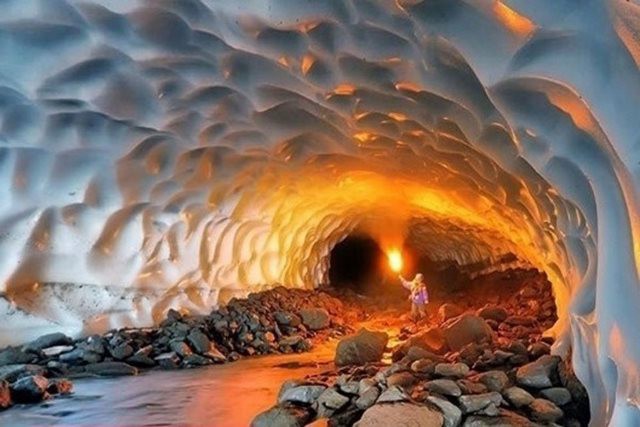
Namakdan Cave Overview
Namakdan Cave stretches over 6 kilometers and is recognized as the world's longest salt cave. It is located in the southwestern part of Qeshm Island, within the Salt Dome. The cave’s structure is composed of salt rocks formed over millions of years due to the unique geological conditions of the region.
Inside the cave, one can witness beautiful salt stalactites and stalagmites formed over time through the interaction of groundwater with the salt deposits. These salt formations along the walls and ceiling of the cave create breathtaking views that captivate every visitor.
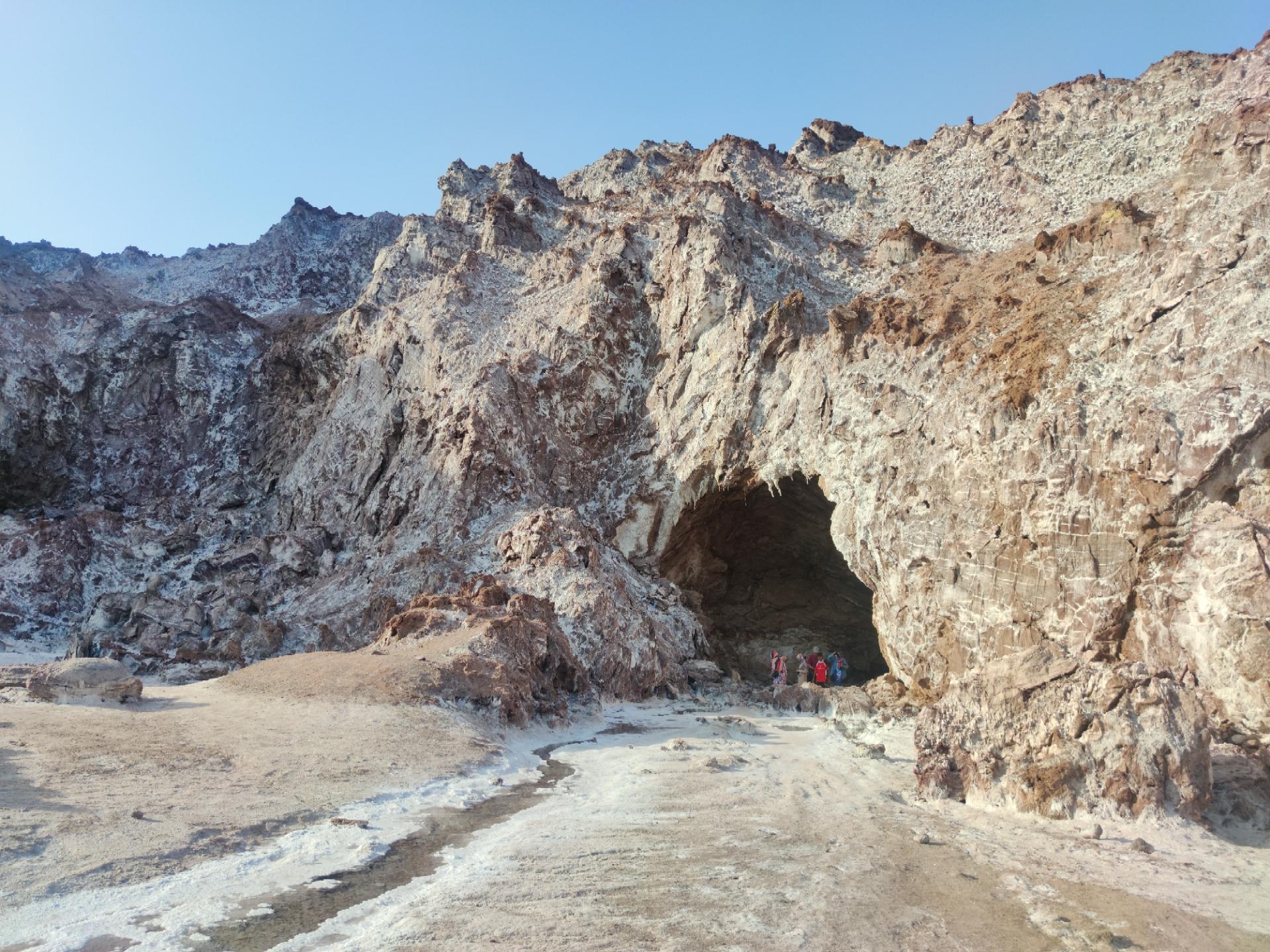
Formation and Geological Features
Namakdan Cave is part of a salt dome, a structure formed by the upward movement of salt from deep within the Earth. This phenomenon occurs due to the low density of salt and the pressure exerted by overlying layers. The salt reaches the Earth's surface and, over time, with the influence of weathering and groundwater, forms caves.
Namakdan Cave is particularly significant as it illustrates the geological activity and natural changes in the region over millions of years. Additionally, the cave is rich in salt resources, making it economically valuable.
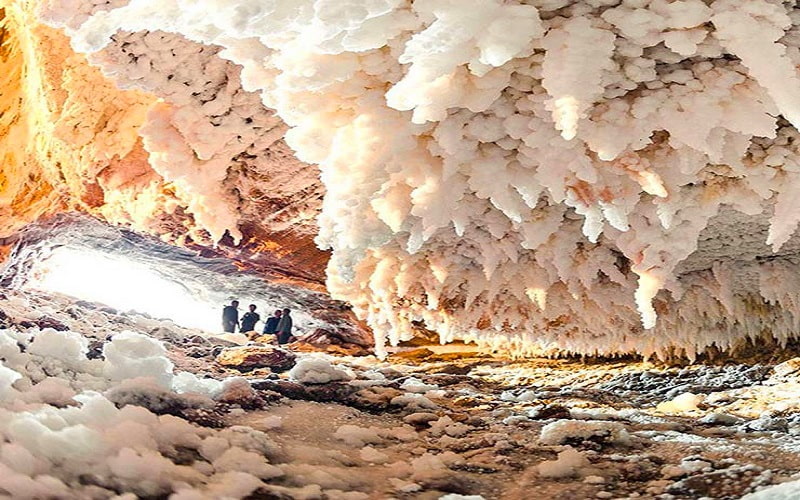
Unique Features of Namakdan Cave
One of the fascinating features of Namakdan Cave is the saltwater streams flowing within. These waters, having come into contact with the salt rocks, become saline and are present in some parts of the cave as small springs. In certain areas, these saline waters combine with various minerals, creating transparent salt crystals that shine beautifully in the light, adding a unique charm to the cave.
Moreover, the air inside the cave is cool and humid due to the presence of salt, providing a tranquil natural environment ideal for visitors seeking a peaceful retreat. Some studies suggest that breathing in the salty air inside the cave can be beneficial for certain respiratory conditions.
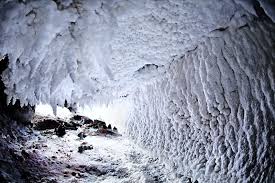
Visiting Namakdan Cave
Visiting Namakdan Cave, especially for nature lovers and geology enthusiasts, offers a unique experience. To reach the cave, one must travel through dirt roads passing by nearby villages. These routes can be challenging during certain seasons due to weather or road conditions, so it’s advisable to check the conditions before traveling.
Inside the cave, due to the absolute darkness, proper lighting equipment like flashlights is essential. Additionally, because of the salty structure and high humidity, it is recommended to wear suitable, non-slip shoes.
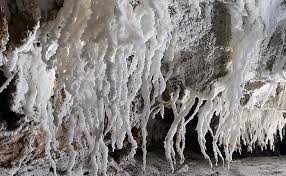
Conservation and Maintenance of the Cave
Namakdan Cave, as a valuable natural phenomenon, requires special protection and maintenance. The presence of tourists, due to the high sensitivity of the cave’s interior environment, can lead to the destruction of salt stalactites and stalagmites. Therefore, following responsible tourism practices and respecting the environment during visits is crucial.
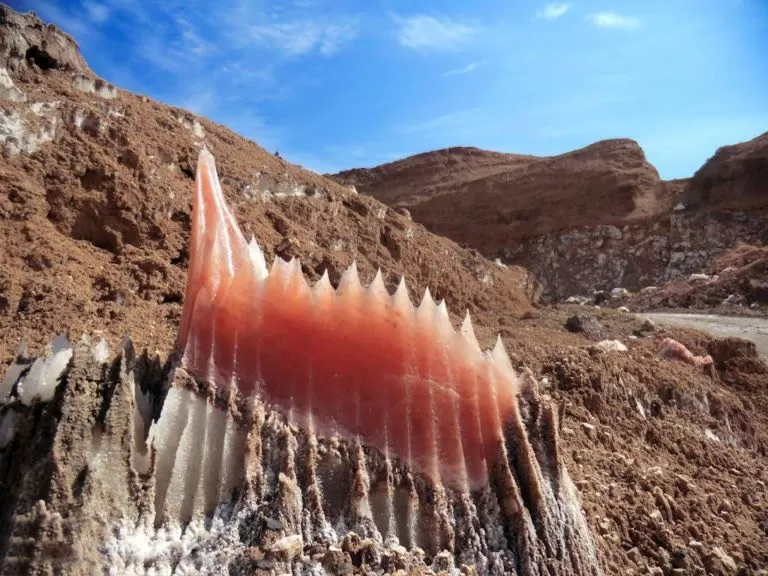
Conclusion
Namakdan Cave in Qeshm is one of the most incredible natural wonders of Iran and the world. This cave, with its unique structure and natural beauty, attracts numerous tourists and researchers each year. Visiting this cave offers not only an opportunity to experience a beautiful natural phenomenon but also contributes to a better understanding of geological processes and natural changes. By preserving and maintaining this natural treasure, we can ensure it remains a valuable heritage for future generation



